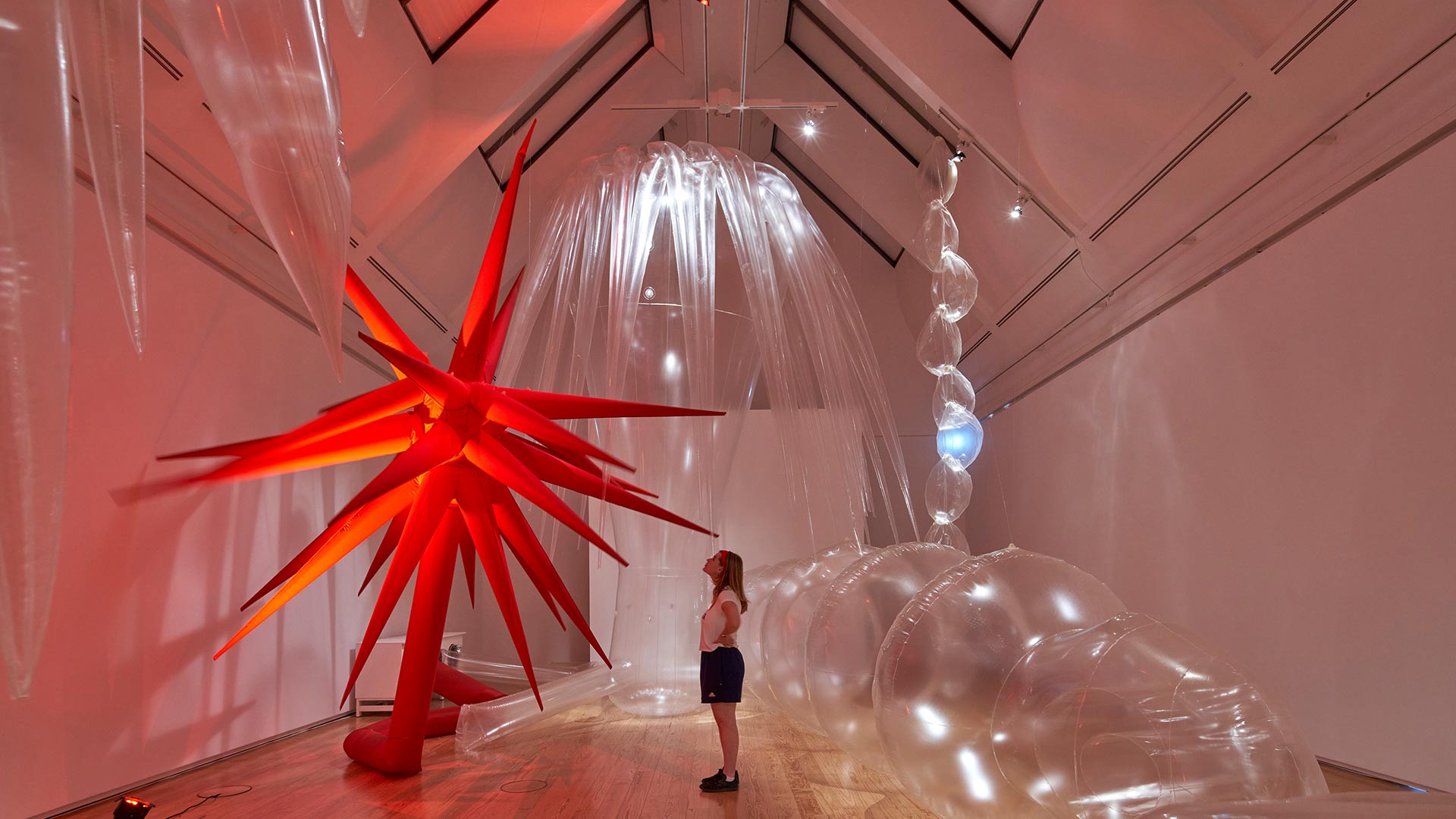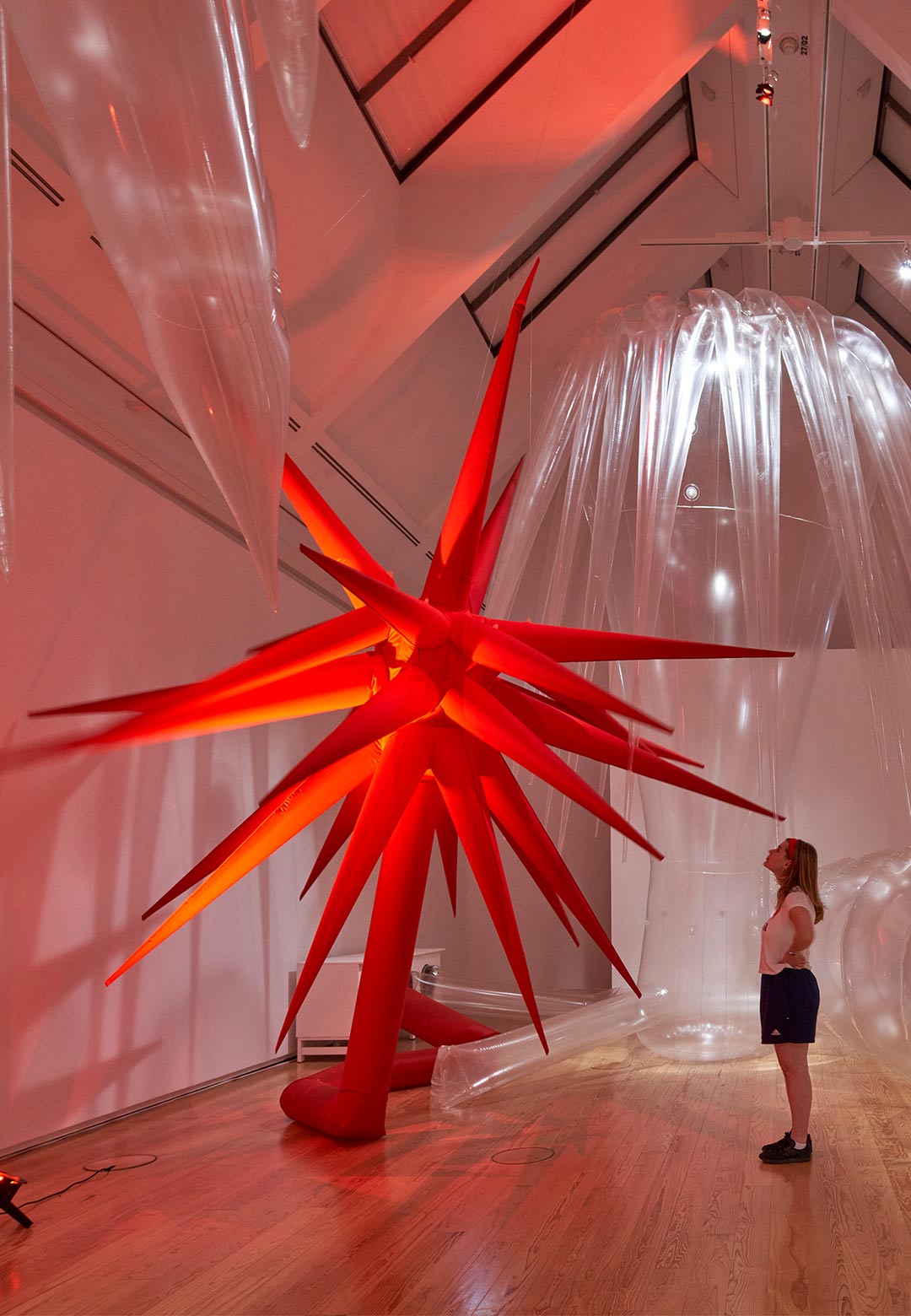Since its invention over a century ago, plastic as a material has been a part of various revolutions in design, art and even society. The possibilities of plastics were (and perhaps continue to be) endless; they can assume any form, be flexible or hard, and sit anywhere on the spectrum of colour, opacity and surface texture. Ergo, synthetic substances became both a symptom and symbol of mass culture, giving birth to the ‘plastic age’. The world of art was no stranger to the radical change brought about by this miracle material. It became a medium of innovation for artists, subsequently making it a pivotal raw material for artistic work in the 20th and 21st centuries. From an emblem of progress and modernity to an environmental threat, what does the journey of plastic look like through the lens of visual art?
Amongst the most coveted exhibition spaces for modern and contemporary art in Europe, Schirn Kunsthalle Frankfurt presents Plastic World, a show dedicated to the permeance of plastic in visual art. Mustering nearly 100 artworks by over 50 artists who work with plastic in diverse ways, the art exhibition runs from June 22 to October 1, 2023. Through the semantics of art, the show elucidates how plastic, as a multifaceted material, has gone from being an unprecedented innovation to an environmental antagonist: plastic waste. “A look at the extremely rich history of plastic as a material opens up a narrative full of ambivalences: of a future-oriented innovative ability and of seductive-seeming objects; of damaging effects, but also the question of new approaches to dealing with this material, which is here to stay,” says Dr. Martina Weinhart, the curator of the exhibition. The exhibition design is segmented into seven thematic areas in architecture by raumlaborberlin. In the 1960s, plastic became the iconic material of Pop Art and was equally popular in both art and design. STIR dives into some of the works on display.
The culture of consumption fascinated many such as Claes Oldenburg who constructed sinks, ice bags, and light switches from vinyl. Swedish multimedia artist Öyvind Fahlströms, on the other hand, satirised the advertising logos in a playful and provocative way. In the male-dominated art world of the time, the view of the female body shaped to one’s desires pervaded. Women artists such as Nicola L., Kiki Kogelnik, Niki de Saint Phalle, and Lourdes Castro increasingly took up the moulding of the body in the surroundings of Pop Art.
Industrial materials soon conquered an entire range of artists. In the second half of the 1960s, creatives connected to the Italian Arte Povera explored the relationship between nature and artificiality. Artists such as Gino Marotta and Piero Gilardi defied the traditional concepts of a mimetic representation of nature. German artist Otto Piene, too, amalgamated technology and nature. In a walk-through environment of roughly 160 square metres, one can see a new edition of Piene's Anemones: An Air Aquarium. The installation is made up of massive inflatable and transparent sea anemones as well as other sea creatures alluding to the ambivalence of plastic as a material and the pollution of oceans by (micro-)plastics.
Space exploration, aerospace technology and the moon landing had a deep impact on pop culture, design and the utopian spirit of the 1960s. Visionary models such as Archigram’s climate capsule Air Hab (1966) experimented with the idea rather than its execution. In Austria, Coop Himmelb(l)au and Hans Hollein opened up new approaches to perception and communication with temporary architectures. Buckminster Fuller notably, investigated the relationships between technology and social aspects based on the use of new materials and was a trailblazer for these ideas. Alongside the ‘Plastic Utopia,’ material experimentation rampantly unearthed the multifaceted possibilities of form and design that the growing family of plastics allowed. While French sculptor César realised happenings with polyurethane foam, the Frankfurt-based artist collective HazMatLab makes use of unconventional substances including synthetic slime, industrial nail polish, and the 3D printing process.
The striking artificiality, smooth surfaces and iridescence of plastic also inspired Finish fetish artists such as Craig Kauffman in California in the late 1960s. Flawless surfaces also mark the sculptures of Berta Fischer, which, like Nironimox (2023), float in space with transparency and lightness. In his Technological Reliquaries, the American artist Paul Thek fascinatingly contrasts the organic texture of an encased piece of rotting meat made of wax with the smoothness of the shrill neon-coloured plastic.
Artists of Nouveau Réalisme such as Arman, however, were already less interested in the ‘perfect’ material than in its remains. In his Poubelles (Trash Cans) of acrylic glass, he accumulated a hodge-podge of the waste of his time—countering pop culture’s enthusiasm for plastic. Christo was another artist who contributed to the shift in perspectives through pieces like Look (ca. 1965). Plastic waste is a staple of more recent works as well. Francis Alÿs’s film Barrenderos (Sweepers, 2004) shows street sweepers in Mexico City engaged in their nightly removal of mountains of plastic garbage. The large-format material collages by the Ethiopian artist Elias Sime are assembled from the debris of civilization coming together to create a special cartography of our present. A drastic change has occurred in the mentality of society with the continuing spread of plastic and its threat—reflected in the eco-critical works of younger artists. In her body of work, Monira Al Qadiri speaks of the dominance of the oil industry, with which she has been familiar since her childhood in Kuwait. In his most recent work, Fungi Decomposition (2023), the Danish artist Tue Greenfort takes a look at a mushroom with the name Pestalotiopsis microspora, which is able to metabolise plastic and transform it into organic material.
The exhibition also showcases immersive installations such as the ones by Pascale Marthine Tayou and Pınar Yoldaş. On the occasion of the exhibition Plastic World, the Schirn Kunsthalle Frankfurt presents the new digital education format SCHIRN 3D PARCOURS. The free service enables users to move around in virtual spaces that are independent of the exhibition and to experience the varied material history of plastic in art as well as the change in its social assessment. Speaking about the aspirations of the comprehensive show, Dr Sebastian Baden, the director of the Schirn Kunsthalle Frankfurt, states, “This history of the plastic age testifies to a pleasure in innovation and creativity. From an ecological perspective, however, plastic is currently developing a particular urgency; it is still ubiquitous in today's mass culture. Our exhibition points beyond purely aesthetic and formal aspects. Rather, it invites a critical examination of this formative material culture."
‘Plastic World’ will remain on view from June 22 to October 1, 2023, at Schirn Kunsthalle Frankfurt in Frankfurt, Germany.






 Sign in with email
Sign in with email










What do you think?